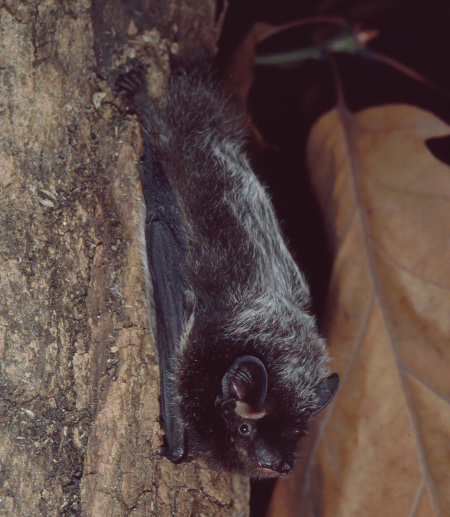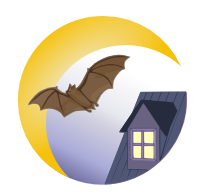Silver-haired bat

Credit: M. B.Fenton
Latin name: Lasionycteris noctivagans
Average size: Total length of 9-11 cm
Wingspan: 26-31 cm
Weight: 6-12 g
External characteristics: This species's fur on its back is black or dark brown with silver tips. The coat covers the upper portion of the wings and about a third of the uropatagium. The ears are almost as long as they are wide. They are black at the base with a pink interior. The tragus is short, straight and rounded at the end. The silver-haired bats' slow flight distinguishes them from other species.
Habitat: This species prefers habitats in forested regions near water where they have access to abundant sources of food. It roosts alone or in small groups near the tops of trees, under tree bark, or in the holes made by woodpeckers. In more urban areas, it often shows up roosting under patio umbrellas. In the fall, the silver-haired bat migrates to the United States, although there are some records of individuals hibernating in British Columbia. During this period, it can be found in buildings.
Reproduction: There is very little information on the reproductive biology of this species. It is assumed that mating takes place in the fall. They have litters of two pups per year that weigh around 1.7-2 grams. Their young are born in June or July after a gestation period of 50 to 60 days. The silver-haired bat is solitary, but it can form small groups of three or four individuals when roosting or foraging.
Seen in: Alberta, British-Columbia, Manitoba, New-Brunswick, Northwest Territories, Nova-Scotia, Ontario, Quebec, Saskatchewan

